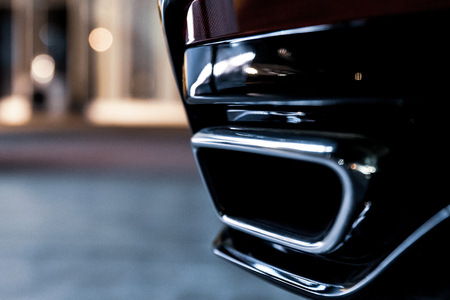1. Thorough Inspection and Certification
Certified Pre-Owned (CPO) vehicles undergo comprehensive multi-point inspections and meet strict manufacturer standards, ensuring quality and reliability. Unlike regular used cars, CPO vehicles go through a detailed evaluation process before they are certified for sale. Manufacturers have specific guidelines that dealerships must follow to inspect and refurbish these vehicles, giving buyers peace of mind.
Multi-Point Inspection Process
Every CPO vehicle goes through an extensive multi-point inspection to ensure it meets high-quality standards. These inspections typically cover essential areas like the engine, transmission, brakes, suspension, and electrical systems. Below is a general overview of key components inspected in a CPO program:
| Inspection Area | Details |
|---|---|
| Engine & Transmission | Checked for leaks, smooth operation, and proper fluid levels |
| Brakes | Brake pads, rotors, and fluid levels are inspected for safety |
| Suspension & Steering | Ensures stability, alignment, and smooth handling |
| Electrical Systems | Battery, lights, and infotainment systems are tested |
| Interior & Exterior | Seats, dashboard, paint, and bodywork are checked for imperfections |
Manufacturer Standards and Certification
CPO programs are backed by manufacturers, meaning each vehicle must meet specific age and mileage limits to qualify. Typically, CPO cars are only a few years old and have lower mileage, making them a great option for buyers who want a near-new car at a lower price point. Once vehicles pass the manufacturer’s inspection process, they receive official certification, making them a reliable and trustworthy choice.
2. Extended Warranty Coverage
Most CPO programs include extended manufacturer-backed warranties, giving buyers additional protection beyond what’s offered with regular used cars. This added coverage offers peace of mind, knowing that if something goes wrong, youre not left with a hefty repair bill.
What Does an Extended Warranty Cover?
While coverage details vary by manufacturer, most CPO warranties include:
| Coverage | What It Includes |
|---|---|
| Powertrain Warranty | Covers essential components like engine, transmission, and drivetrain. |
| Bumper-to-Bumper Warranty | Includes most mechanical and electrical systems, similar to a new car warranty. |
| Roadside Assistance | Services such as towing, fuel delivery, and lockout assistance. |
Why Is Extended Warranty Coverage Important?
Buying a used car comes with risks, but a CPO vehicle minimizes those risks with an extended warranty. If an unexpected mechanical issue arises, you’re likely covered, saving you from high repair costs. This makes a CPO vehicle a smarter choice for those who want reliability without paying new car prices.
How Long Does CPO Warranty Coverage Last?
The length of coverage differs by brand, but many manufacturers offer:
- Powertrain warranties lasting up to 7 years or 100,000 miles.
- Bumper-to-bumper warranties extending for 12 to 24 months beyond the original warranty.
- Additional perks such as free vehicle inspections and roadside assistance.
Be sure to check with the manufacturer for specifics, as terms and conditions vary.
![]()
3. Roadside Assistance and Other Perks
Many CPO vehicles come with benefits such as 24/7 roadside assistance, complimentary maintenance, and special financing options. These perks add extra value to your purchase, giving you greater confidence and convenience as a car owner.
24/7 Roadside Assistance
One of the biggest advantages of buying a Certified Pre-Owned vehicle is the included roadside assistance program. Whether you experience a flat tire, need a jump start, or lock your keys inside the car, help is just a phone call away. Some manufacturers even offer emergency fuel delivery and towing services.
Complimentary Maintenance
Many automakers include complimentary scheduled maintenance for a certain period or mileage. This can cover essential services such as oil changes, tire rotations, and multi-point inspections. Here’s a quick example of what some CPO programs might offer:
| Automaker | Complimentary Maintenance Coverage |
|---|---|
| Toyota | 2 years or 25,000 miles |
| BMW | 1 year with unlimited miles |
| Honda | First scheduled service free |
Special Financing Offers
Certified Pre-Owned vehicles often come with lower interest rates and exclusive financing deals compared to regular used cars. Many manufacturers offer special APR rates that can save you money over the duration of your loan. If you’re looking for an affordable way to own a high-quality vehicle, taking advantage of these financing incentives is a smart move.
4. Lower Depreciation Compared to New Cars
CPO vehicles have already experienced the steepest depreciation, allowing buyers to get a high-quality car at a better value with slower future depreciation.
New Cars Lose Value Quickly
When you buy a brand-new car, it starts losing value the moment you drive it off the lot. Within the first year alone, a new car can depreciate by as much as 20% to 30%. Over the next few years, this decline continues, making new cars a costly investment in terms of resale value.
How CPO Vehicles Help You Save
Since CPO vehicles are typically a few years old, they have already gone through the most significant depreciation drop. This means that you’re not taking the biggest hit in value, and the car will depreciate at a much slower rate while you own it.
Depreciation Comparison: New vs. CPO Cars
| Vehicle Type | Depreciation in First Year | Depreciation Over 3 Years |
|---|---|---|
| New Car | 20% – 30% | 40% – 50% |
| CPO Vehicle | Minimal | Significantly Lower |
Better Value for Your Money
By choosing a CPO vehicle, you avoid the rapid depreciation of a brand-new car while still getting a late-model, reliable vehicle with warranty coverage. This makes CPO cars an excellent choice for budget-conscious buyers who want the best value for their money.
5. Five, Vehicle History Report and Peace of Mind
Each CPO vehicle typically includes a detailed history report, so buyers can be confident in their purchase knowing the car has a clean title and no major issues.


